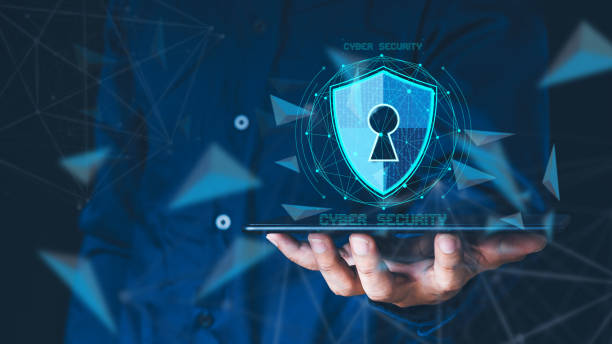Introduction
As we delve deeper into the digital era, internet security has become a critical concern for individuals and organizations alike. In 2024, the world of cyber threats continues to evolve, posing significant challenges to the integrity and security of online systems. It is important to understand the types of internet security threats that are common today to guard against potential risks. Let’s have a look for a deeper understanding.
Types of Internet Security Threats
Malware
Malware, a term derived from “malicious software,” encompasses a broad spectrum of malicious programs designed to infiltrate, damage, or gain unauthorized access to computer systems and networks. These include viruses, worms, Trojans, spyware, and ransomware, among others. Recent years have witnessed a surge in sophisticated malware attacks, targeting both individuals and enterprises worldwide.
Such attacks can result in data loss, financial theft, and system downtime, highlighting the critical need for robust malware prevention and detection measures.
Phishing Attacks
Phishing attacks involve the use of deceptive emails, websites, or messages to trick individuals into divulging sensitive information, such as usernames, passwords, or financial details. Cybercriminals often impersonate trusted entities, such as banks, government agencies, or reputable organizations, to lure unsuspecting victims into clicking on malicious links or providing confidential data.
Phishing attacks continue to evolve in sophistication, making them increasingly challenging to detect and mitigate. Therefore, it is crucial for individuals and organizations to stay vigilant and adopt best practices for identifying and avoiding phishing scams.
Ransomware
Ransomware has emerged as one of the most pervasive and damaging forms of cyber threats, encrypting files or systems and demanding ransom payments for their release. High-profile ransomware incidents have targeted businesses, healthcare facilities, and government agencies, causing widespread disruption and financial losses.
Mitigating ransomware risks requires a multi-faceted approach, including regular data backups, robust cybersecurity solutions, employee training, and incident response plans. Organizations must also invest in proactive measures to detect and prevent ransomware attacks before they can inflict significant harm.
Data Breaches
Data breaches occur when sensitive information is accessed, stolen, or exposed without authorization. These breaches can result from various factors, including cyberattacks, insider threats, or negligence in data handling practices. The consequences of data breaches can be severe, ranging from financial losses and legal liabilities to reputational damage and regulatory penalties.
To mitigate the risk of data breaches, organizations must implement comprehensive security controls, such as encryption, access management, and monitoring tools, to safeguard sensitive data across its lifecycle.
DDoS Attacks
Distributed Denial of Service (DDoS) attacks aim to disrupt the availability of online services by flooding target systems or networks with an overwhelming volume of traffic. These attacks can cause website downtime, service interruptions, and financial losses for businesses. DDoS attacks have become increasingly sophisticated, leveraging botnets and amplification techniques to maximize their impact.
To defend against DDoS attacks, organizations need robust network infrastructure, traffic filtering mechanisms, and proactive monitoring tools to detect and mitigate malicious traffic in real-time.
Social Engineering
Social engineering attacks exploit human psychology and trust to manipulate individuals into divulging confidential information or performing actions that compromise security. These attacks often involve impersonation, deception, or emotional manipulation to persuade victims to disclose sensitive data or grant unauthorized access.
Social engineering attacks can target individuals through various channels, including emails, phone calls, or social media platforms. Educating users about common social engineering tactics, implementing security awareness training programs, and establishing strict access controls are essential steps in mitigating the risk of social engineering attacks.
Mobile Security Risks
Mobile devices have become indispensable in both personal and professional settings, but they also pose significant security risks due to their ubiquitous nature and diverse functionalities. These risks include malware infections, data breaches, device theft, and unauthorized access to sensitive information.
Attackers exploit vulnerabilities in mobile operating systems, and apps to compromise mobile devices and steal personal or corporate data. To enhance mobile security, individuals and organizations must adopt best practices such as device encryption, app whitelisting, and regular security updates to protect against threats.

| Call 866-861-4084 for Internet Deals |
IoT Vulnerabilities
The proliferation of Internet of Things (IoT) devices has introduced new security challenges, as many of these devices lack robust security features and are susceptible to exploitation by cybercriminals. Compromised IoT devices can be leveraged to launch DDoS attacks, collect sensitive data, or infiltrate networked systems.
Securing IoT infrastructure requires a multi-layered approach, including device authentication, encryption, firmware updates, and network segmentation. Organizations must also prioritize security in IoT product development and adopt industry best practices to mitigate IoT-related vulnerabilities effectively.
Insider Threats
Insider threats refer to security risks posed by individuals within an organization who misuse their access privileges for malicious purposes. These insiders may include disgruntled employees, careless contractors, or unwitting accomplices manipulated by external actors. Insider threats can result in data breaches, intellectual property theft, or sabotage, causing significant financial and reputational harm to organizations.
AI and Machine Learning Threats
While artificial intelligence (AI) and machine learning (ML) technologies offer benefits in various domains, they also introduce new security risks and challenges. Malicious actors can exploit AI and ML algorithms to automate and enhance cyber attacks, making them more sophisticated and difficult to detect.
How to Keep Yourself Safe
Keeping yourself safe from internet security threats requires a combination of proactive measures and vigilance. Here are some essential steps to help protect yourself:
Install and Update Security Software:
Use reputable antivirus and anti-malware software on all your devices, including computers, smartphones, and tablets. Keep these programs up-to-date to ensure they can detect and block the latest threats.
Enable Firewall Protection:
Activate the built-in firewall on your operating system or install a reputable third-party firewall to monitor and control incoming and outgoing network traffic. Firewalls help prevent unauthorized access to your devices and block malicious software from spreading.
Use Strong Passwords:
Create complex passwords for your accounts, combining uppercase and lowercase letters, numbers, and special characters. Avoid using easily guessable information like your name or birthdate. Consider using a password manager to securely store and manage your passwords.
Implement Two-Factor Authentication (2FA):
Enable 2FA wherever possible to add an extra layer of security to your accounts. This typically involves entering a one-time code sent to your phone or email in addition to your password, making it harder for attackers to access your accounts.
Keep Software Updated:
Regularly update your operating system, web browsers, and software applications to patch security vulnerabilities and protect against known exploits. Enable automatic updates whenever possible to ensure you’re always running the latest versions.
Be Cautious of Suspicious Emails and Links:
Exercise caution when opening email attachments or clicking on links, especially if they’re from unknown senders or seem suspicious. Be wary of phishing emails that attempt to trick you into revealing sensitive information or downloading malware.
Secure Your Wi-Fi Network:
Change the default password on your router and use strong encryption (WPA2 or WPA3) to protect your Wi-Fi network from unauthorized access. Consider hiding your network name (SSID) and enabling network encryption to further enhance security.

Practice Safe Browsing Habits:
Only visit trusted websites and avoid clicking on ads or pop-ups from unknown sources. Use a secure web browser with built-in security features like sandboxing and anti-phishing protection. Consider using browser extensions or plugins that block malicious content.
Backup Your Data Regularly:
Keep regular backups of your important files and data on external hard drives, cloud storage services, or backup software. In the event of a malware infection or data loss, you can restore your files from backup without losing valuable information.
Stay Informed About Threats:
Stay informed about the latest cybersecurity threats and trends by following reputable sources such as cybersecurity blogs, and news websites. Also, educate yourself about common attack techniques and how to recognize and respond to threats.
Conclusion
Thats all. The boost of internet-connected devices, digital platforms, and emerging technologies has significantly expanded the attack surface for cybercriminals, posing unmatched challenges to internet security threats. By understanding the types of internet threats and adopting cybersecurity strategies and best practices, we can enhance our resilience to cyber attacks and safeguard our digital assets and privacy in an increasingly interconnected world.
| Call 866-861-4084 for Internet Deals |
FAQs
How can individuals protect themselves from phishing attacks?
Individuals can protect themselves from phishing attacks by being cautious of unsolicited emails, avoiding clicking on suspicious links or attachments, verifying the authenticity of email senders, and using security software with anti-phishing features.
Why are insider threats considered a significant security risk?
Insider threats are considered a significant security risk because insiders have legitimate access to sensitive data and systems, making it challenging to detect and prevent malicious activities. Insider threats can result in data breaches, intellectual property theft, or sabotage, causing significant financial and reputational harm to organizations.
What role does encryption play in mitigating ransomware attacks?
Encryption plays a crucial role in mitigating ransomware attacks by protecting sensitive data from unauthorized access or tampering.
How can organizations improve their incident response capabilities?
Organizations can boost incident response by creating and testing plans, clarifying roles, and using detection systems. Regular training and collaboration with stakeholders enhance coordination.

Meet Jennifer Harper, a wordsmith extraordinaire who has been shaping the digital landscape with her creative prowess for the past two years. Not just a content writer; she is a storyteller who brings the content to life. Her passion for internet trends, memes, and the ever-evolving world of entertainment is evident in every piece she creates. Jennifer doesn’t just follow trends; she sets them.